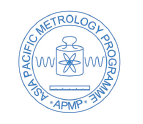The international frameworks for scientific metrology
The Metre Convention
The Metre Convention was signed on 20 May 1875 to enable signatory governments "to act in common accord on all matters relating to units of measurement". A range of structures have been established at the global level to deliver on this mandate. The organs established under Metre Convention are responsible for ensuring the ongoing integrity of the SI, supported by the BIPM. National Metrology Institutes (NMIs) (and Designated Institutes, DIs) maintain and disseminate the peak measurement standards for each economy.
What is the International System of Units (SI)?

The International System of Units (SI), also known as the metric system, comprises a coherent system of units, built on the foundation of seven base units (see table below). For more information, see the SI Brochure.
| Base Quantity | Base Unit | Symbol |
|---|---|---|
| Time | Second | s |
| Length | Metre | m |
| Mass | Kilogram | kg |
| Electric current | Ampere | A |
| Thermodynamic temperature | Kelvin | K |
| Amount of substance | Mole | mol |
| Luminous intensity | Candela | cd |
Size Matters
International Bureau of Weights and Measures (BIPM)

The International Bureau of Weights and Measures is an intergovernmental organisation that was established by the Metre Convention, through which Member States act together on matters related to measurement science and measurement standards. The organisation is commonly referred to by its French initials, BIPM.
For more information about the role and structure of the BIPM see:
Asia-Pacific Metrology Programme

The work of the BIPM is supported at the regional level by Regional Metrology Organizations (RMOs). The RMO for the Asia Pacific is the Asia-Pacific Metrology Programme (APMP). APMP was established in 1977 and is a grouping of NMIs and other expert metrology institutes whose mission is to:
- promote and support the region’s measurement infrastructure to facilitate international trade,
- improve industrial efficiency and competitiveness,
- ensure equity in the marketplace, and
- enhance the quality of life and the environment.
For more detail see the Quality Infrastructure page of this website

